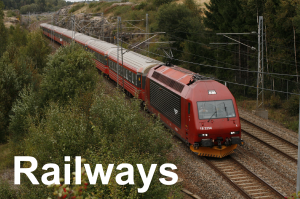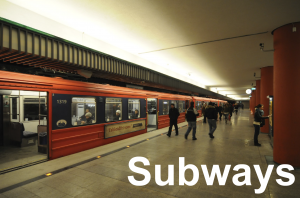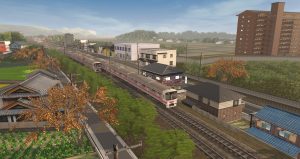Alpico Kotsu

Alpico Kotsu has it’s origin in the Matsumoto Electric Railway, a small company originally established on the 9th of May 1920 as the “Chikuma Railway” to build and operate a planned network of electric tramways and light railways around Matsumoto. The company’s first railway line, the current Kamikochi Line, opened on the 2nd of October 1921, running east-to-west connecting Matsumoto and Shinmura, being later extended to Shimashima, a small town at the foot of the Northern Japanese Alps and the gateway to the scenic Kamikochi valley.
In 1924, the 5,3Km-long Asama Line opened as an electric tramway connecting Matsumoto station to the thermal resorts of Asama, located in the northern part of the city. In 1931, the company was renamed to “Matsumoto Electric Railway” and in the follwing decades it merged with and acquired some smaller bus companies. 1964 saw the closure of the Asama Line, as busses became faster, leaving the Kamikochi Line (named the “Shimashima Line” until 1955) as the company’s only railway line.
Mass-motorisation and the competition of bus services gradually shrunk the ridership of the line between the 1960s and 1970s – in 1983, a thyphoon caused a landslide that destroyed Shimashima, the western terminus station – truncating services by 1.3Km, with the second-to-last station, Shin-Shimashima, becoming the new terminus – the remaining section to Shimashima was officially abandoned in 1985.
In 1986, the line’s voltage was increased from 600v to 1500v, and in 1992 the company introduced a modern new logo, livery and company name – giving birth to the “Alpico Group” togheter with 18 other firms, such as smaller bus companies, real estate, tourism agencies and an advertising company.
However, decades of declining passengers dealt significant damages to Alpico’s finances, with the group declaring bankruptcy by insolvency in 2007, with the prefectural and local governments (primarily Matsumoto City) stepping in to help by granting considerable subsidies and by taking a more pro-active stance towards Alpico: in 2011 the various loosely-knit companies within the group were merged togheter, now becoming a “solid” company – albeit retaining the “Alpico Group” name. The restructuration was completed with the merge and acquisition of two other small bus operator – Suwa Bus and Kawanajima Bus.
The key component of the group still remains “Alpico Kotsu” (Alpico Transportation), the actual “transport-operating” arm, with three divisions: “Highland Rail” (wich operates the Kamikochi Line), “Highland Express” (wich operates highway and express intercity bus routes) and “Highland Shuttle” (wich operates local and regional bus routes). These are also reciprocally supported by the other “arms” of the group, wich evolved from the 18 companies that joined in 1992, operating real estate and property management agencies and tourist and travel agencies.
In itself, the company’s only railway line, the Kamikochi Line, is 14,4Km-long, with services running evry 30 or 40 minutes – formerly dwindling, starting from 2005 passenger numbers have begun to rise, primarily thanks to the increasing number of tourists heading to the lush and scenic Kamikochi valley. As result of previous cost-cutting mesaures, all trains are one-man operated, and only a handful of station out of the 14 stations are staffed.
Trivia #1
Depsite the “Matsumoto Electric Railway” no longer being the name of the company since 2011, it’s still being used in in-car announcments on Kamikochi Line trains.
Trivia #2
Alpico Kotsu owns a total of only four trains – among the smallest fleets for an operationally-independed railway, yet entirely enough to operate the Kamikochi Line’s services, wich do run at a considerable frequency for a local single-tracked railway.
Trivia #3
The Kamikochi Line has 54 level crossings over 14,4Km of line – an average of one evry 270m.
Kamikochi Line




